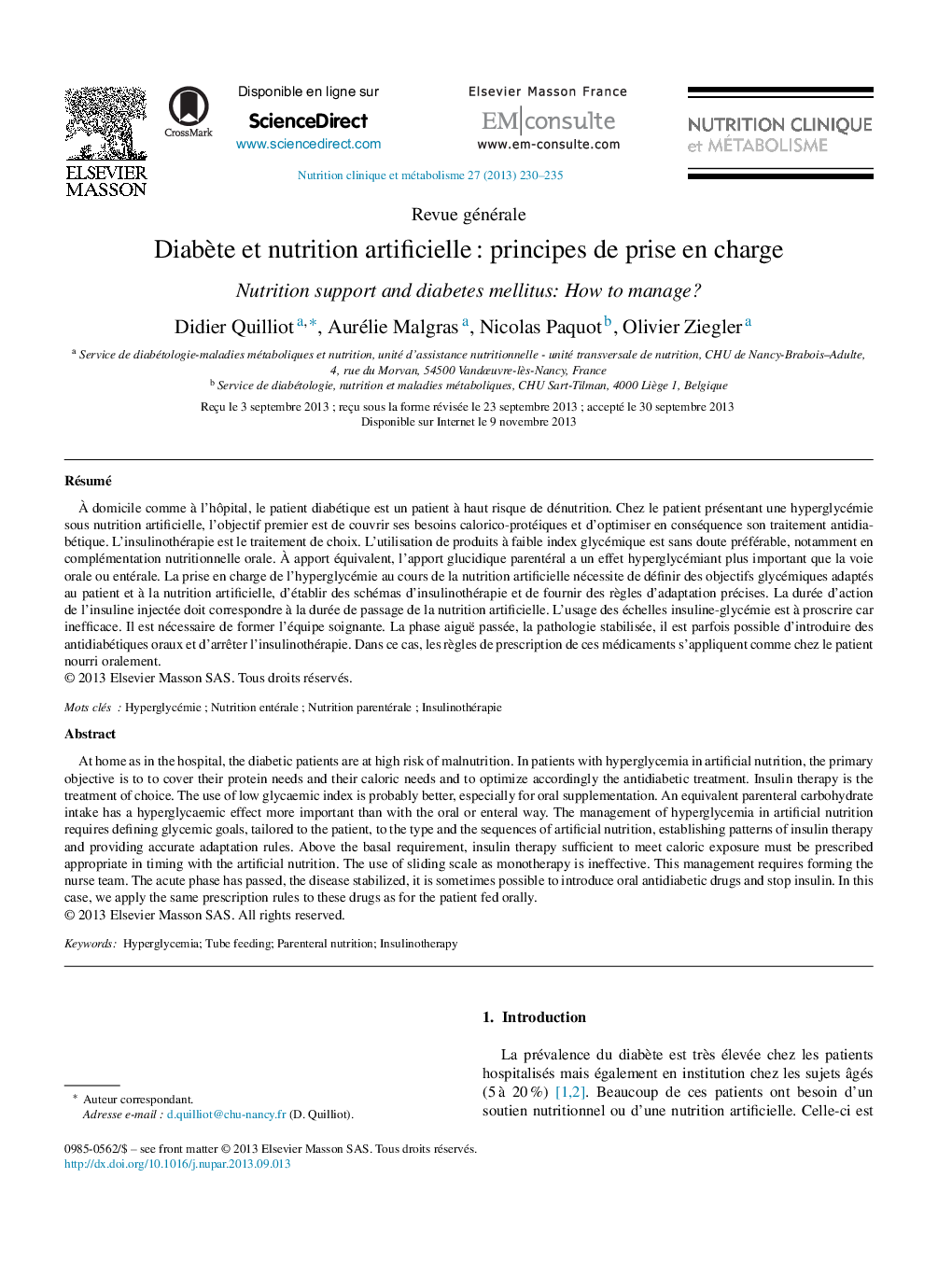| Article ID | Journal | Published Year | Pages | File Type |
|---|---|---|---|---|
| 2693946 | Nutrition Clinique et Métabolisme | 2013 | 6 Pages |
RésuméÀ domicile comme à l’hôpital, le patient diabétique est un patient à haut risque de dénutrition. Chez le patient présentant une hyperglycémie sous nutrition artificielle, l’objectif premier est de couvrir ses besoins calorico-protéiques et d’optimiser en conséquence son traitement antidiabétique. L’insulinothérapie est le traitement de choix. L’utilisation de produits à faible index glycémique est sans doute préférable, notamment en complémentation nutritionnelle orale. À apport équivalent, l’apport glucidique parentéral a un effet hyperglycémiant plus important que la voie orale ou entérale. La prise en charge de l’hyperglycémie au cours de la nutrition artificielle nécessite de définir des objectifs glycémiques adaptés au patient et à la nutrition artificielle, d’établir des schémas d’insulinothérapie et de fournir des règles d’adaptation précises. La durée d’action de l’insuline injectée doit correspondre à la durée de passage de la nutrition artificielle. L’usage des échelles insuline-glycémie est à proscrire car inefficace. Il est nécessaire de former l’équipe soignante. La phase aiguë passée, la pathologie stabilisée, il est parfois possible d’introduire des antidiabétiques oraux et d’arrêter l’insulinothérapie. Dans ce cas, les règles de prescription de ces médicaments s’appliquent comme chez le patient nourri oralement.
At home as in the hospital, the diabetic patients are at high risk of malnutrition. In patients with hyperglycemia in artificial nutrition, the primary objective is to to cover their protein needs and their caloric needs and to optimize accordingly the antidiabetic treatment. Insulin therapy is the treatment of choice. The use of low glycaemic index is probably better, especially for oral supplementation. An equivalent parenteral carbohydrate intake has a hyperglycaemic effect more important than with the oral or enteral way. The management of hyperglycemia in artificial nutrition requires defining glycemic goals, tailored to the patient, to the type and the sequences of artificial nutrition, establishing patterns of insulin therapy and providing accurate adaptation rules. Above the basal requirement, insulin therapy sufficient to meet caloric exposure must be prescribed appropriate in timing with the artificial nutrition. The use of sliding scale as monotherapy is ineffective. This management requires forming the nurse team. The acute phase has passed, the disease stabilized, it is sometimes possible to introduce oral antidiabetic drugs and stop insulin. In this case, we apply the same prescription rules to these drugs as for the patient fed orally.
